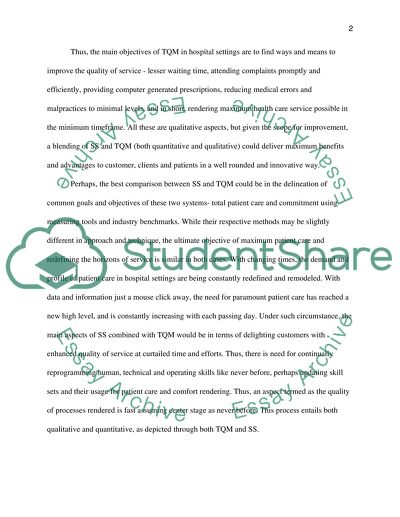Cite this document
(“A comparative analysis between Total Quality Management(TQM) and the Term Paper”, n.d.)
A comparative analysis between Total Quality Management(TQM) and the Term Paper. Retrieved from https://studentshare.org/miscellaneous/1559656-a-comparative-analysis-between-total-quality-managementtqm-and-the-six-sigma-system-of-quality-improvement-as-they-both-relate-to-healthcare
A comparative analysis between Total Quality Management(TQM) and the Term Paper. Retrieved from https://studentshare.org/miscellaneous/1559656-a-comparative-analysis-between-total-quality-managementtqm-and-the-six-sigma-system-of-quality-improvement-as-they-both-relate-to-healthcare
(A Comparative Analysis Between Total Quality Management(TQM) and the Term Paper)
A Comparative Analysis Between Total Quality Management(TQM) and the Term Paper. https://studentshare.org/miscellaneous/1559656-a-comparative-analysis-between-total-quality-managementtqm-and-the-six-sigma-system-of-quality-improvement-as-they-both-relate-to-healthcare.
A Comparative Analysis Between Total Quality Management(TQM) and the Term Paper. https://studentshare.org/miscellaneous/1559656-a-comparative-analysis-between-total-quality-managementtqm-and-the-six-sigma-system-of-quality-improvement-as-they-both-relate-to-healthcare.
“A Comparative Analysis Between Total Quality Management(TQM) and the Term Paper”, n.d. https://studentshare.org/miscellaneous/1559656-a-comparative-analysis-between-total-quality-managementtqm-and-the-six-sigma-system-of-quality-improvement-as-they-both-relate-to-healthcare.


